The Physical Properties of Silver
10/01/2024Daniel Fisher
Free & fully insured UK Delivery. Learn more
Secure & flexible payments. Learn more

Buyback Guarantee Learn more
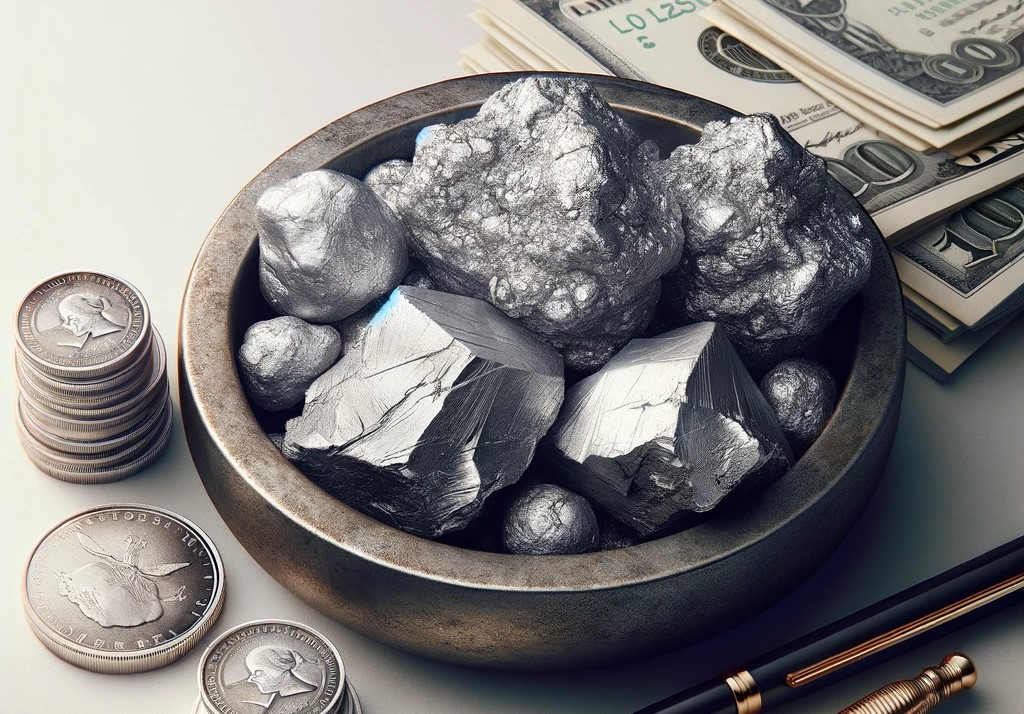
Silver, a metal with a rich history and versatile properties, holds a distinct place in our world. Beyond its aesthetic appeal, silver’s significance spans industries, technologies, and even our pockets in the form of coins. While silver is often represented as second best to gold in both price and the classic medal system, it has certain characteristics that make it the clear winner and which set it apart from any other element on earth.
In this exploration, we delve into the fundamental aspects of silver, uncovering its atomic nature, physical characteristics, and practical applications. We ponder how the evolving technological era could combine with silver’s unique properties to catapult its price skywards.
Silver’s unique and distinguished attributes are rooted in its fundamental chemical properties. Examining its elemental identity and atomic features provides the framework to understand why it’s so special.
Silver is a metallic element embodying the archetypal traits of metals. Known for its lustrous appearance, malleability, and conductivity, silver has been prized for centuries in jewellery, currency, and industrial applications. With a rich history tied to wealth and craftsmanship, silver plays a vital role in various sectors, from technology to medicine. You know if something is made from silver as it displays a series of unique properties.
With an atomic number standing proud at 47, silver’s nucleus boasts a structure that sets it apart in the periodic table. Weighing in at 107.87 atomic mass units, its atomic weight contributes to the overall physical properties that define this exceptional metal.
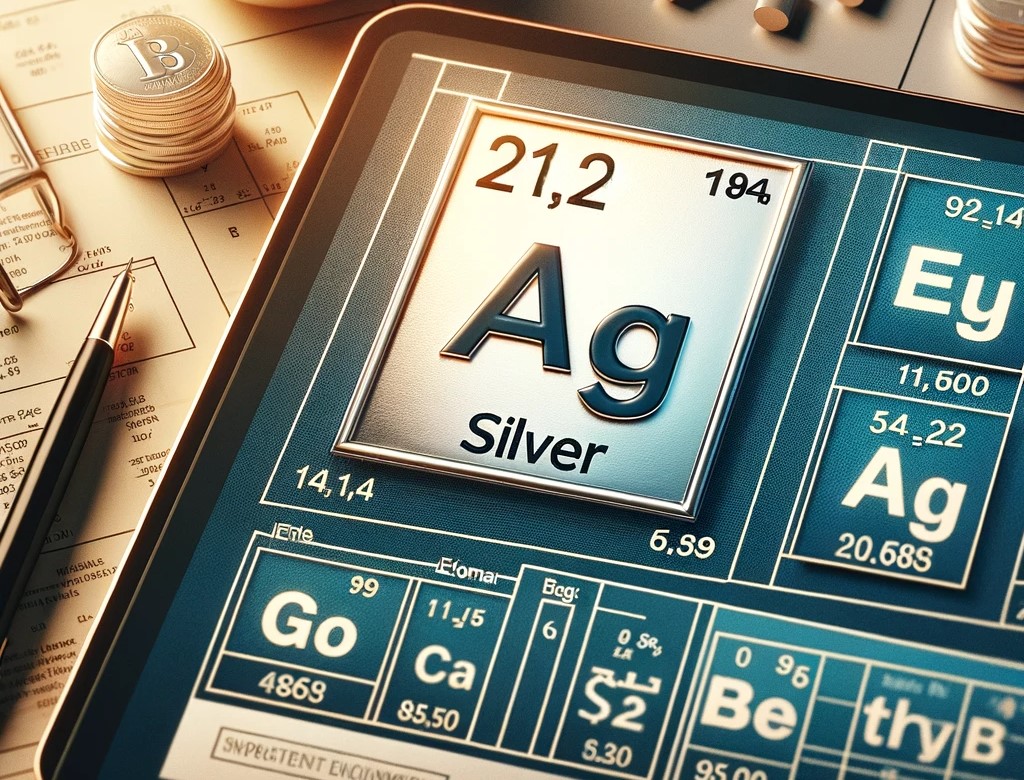
The chemical symbol for silver is ‘Ag,’. The roots of its symbol trace back to the Latin word ‘Argentum‘, a reflection of its historical significance. Interestingly, this term shares a linguistic bond with the French word ‘argent,’ meaning both silver and money. This semantic connection unveils the historical interplay between wealth and precious metals, casting a unique light on silver’s role in the tapestry of human civilization.
Positioned within the transition metals on the periodic table, silver stands shoulder to shoulder with elements of shared characteristics, yet its individuality shines through, making it one of the best-known elements. Understanding its atomic traits and symbolic representation lays the foundation for comprehending the broader significance of silver in various contexts.
Silver’s hallmark lies in its captivating appearance. Boasting a distinct silver-white colour, it reflects light with a captivating lustre. This visual allure, coupled with its intrinsic properties, has made silver a cherished material in the realms of ornamentation and craftsmanship.
The malleability and ductility of silver are exceptional, allowing skilled artisans to shape it with ease. This characteristic flexibility is at the heart of silver’s journey from raw material to finely crafted artifacts, underscoring its role not just as a metal but as a medium for artistic expression. Gold is the most ductile of metals, followed by silver, allowing both metals to be drawn into thin wires several metres long.
Silver’s malleability means it can be beaten into thin sheets without the material cracking or shattering. One interesting use of malleable silver comes from the south-east Asian sweets manufacturing industry, where sheets of pure silver, a few micrometres thick are used as a covering for sweets and almost 250 tonnes of silver is eaten in this way every year.
Silver is a noble metal with a high density of 10.49 grams per cubic centimetre at 20°C, silver embodies a substantial mass within a confined space. This density, a result of its atomic structure, contributes to its weightiness and physical presence.
The high density of silver makes it difficult for counterfeiters to produce fake silver coins. If the size of the coin is right, but it isn’t made of silver, it is easy to detect by weight. Similarly, if the coin is made using a base metal at the right weight, its size would be incorrect. As pure silver is too soft a metal. Jewellery is often made with sterling silver, which is an alloy with 92.5% pure silver, blended with other base metals like copper, nickel or zinc.
At standard conditions, silver stands resolute in its solid state. Enduringly stable, this characteristic renders it a reliable and enduring substance, setting the stage for its multifaceted applications.
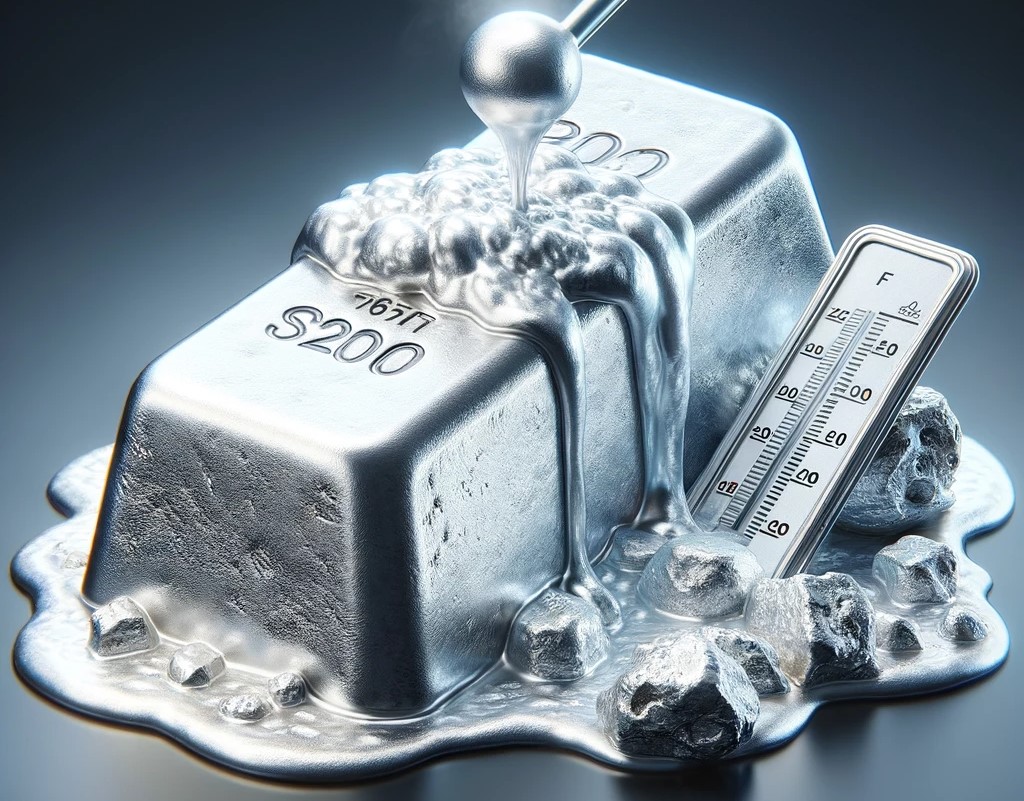
A defining trait of silver is its relatively high melting point, measured at 961.8°C. This attribute not only contributes to its durability but also forms the basis for its manipulation in various forms, from intricate jewellery designs to industrial applications.
While the melting point for pure silver is at a relatively high 961.8°C, it’s essential to note that pure silver in its pristine form tends to be too soft for many uses. Consequently, 99.9% fine silver is usually only used to mint bullion, such as silver coins or bars. To enhance its durability and hardness, most silver items are crafted from silver alloys, usually a metal such as copper. Sterling silver for example, combines 92.5% silver with 7.5% copper and exhibits a slightly lower melting point compared to pure silver, residing at around 893°C.
Note: The melting points below are approximate and may vary based on specific alloy compositions.
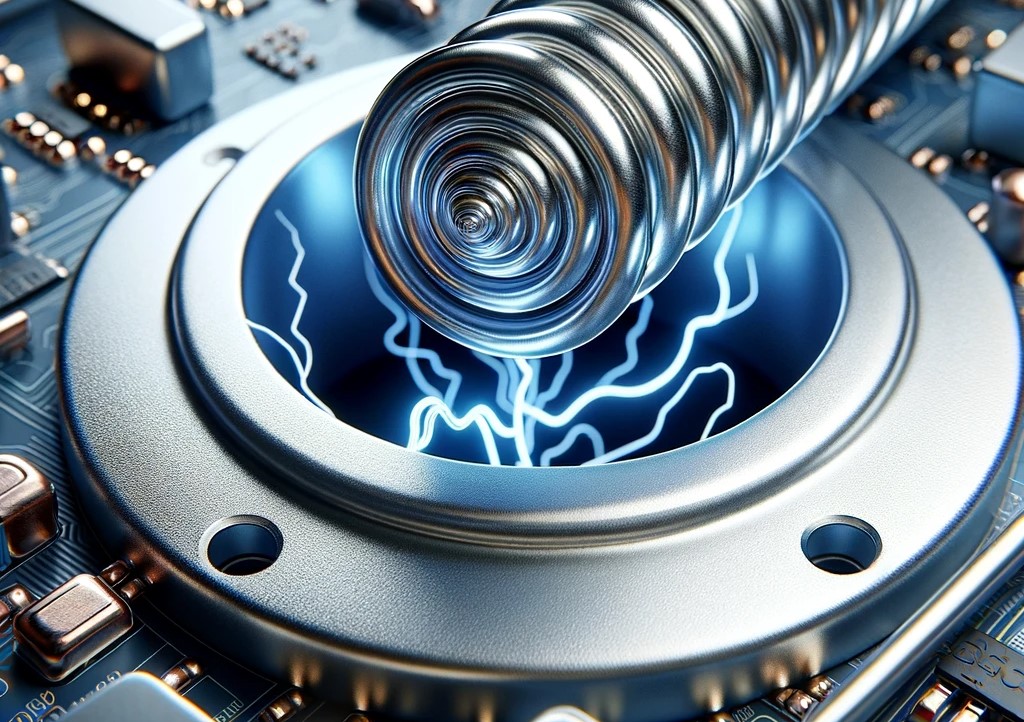
Arguably, silver’s unparalleled conductive properties are both its most impressive asset and its most exploited. Silver wears its badge as the most conductive metal known to man with honour in a digital age that is constantly creating new demand for silver.
To demonstrate how well suited it is to the technological era, special gloves are now available for use with touchscreen phones, created from nylon fibres woven with silver. These gloves utilise the conductivity of silver to ensure that the bio-electricity from human hands can permeate through the gloves onto the touchscreen so that users can wear the gloves outdoors in winter and still use their smartphones.
One of silver’s standout features is its exceptional thermal conductivity. This property allows silver to efficiently conduct heat, making it a preferred choice in various industrial applications. From electronics to cookware, the ability of silver to rapidly transfer and distribute heat plays a pivotal role in its widespread usage.
Silver’s prowess in electrical conductivity is unparalleled among metals. With a high electrical conductivity rating of 63 × 10^6 S/m, silver emerges as a key component in the production of electrical conductors. This property is harnessed in the creation of electrical wiring, as the connectors in all printed circuit boards, as an electrical conductor coating and countless other electronic components. The efficiency with which silver facilitates the flow of electrons underscores its significance in powering our modern technological landscape.
Free ultimate guide for keen precious metals investors
Silver, while generally unreactive with oxygen in the air, can undergo a reaction with hydrogen sulfide and sulfur compounds, leading to tarnishing. This tarnishing is commonly seen as a darkening of the silver surface, a process accelerated in environments with higher levels of sulfur. While this can affect the aesthetics of silver coins, it doesn’t really impact value. We have some helpful tips on how to remove tarnishing from silver. In terms of water, silver tends to remain stable, resisting corrosion in typical atmospheric conditions. However, care is needed to prevent the accumulation of tarnish, particularly in certain environments.
One of silver’s notable attributes is its corrosion resistance, particularly in comparison to other metals. Silver, even in its pure form, showcases resilience against corrosion, allowing it to maintain its lustrous appearance over time. This resistance is further heightened when silver is alloyed with other metals, creating compositions like Sterling silver. The corrosion resistance of silver renders it a compelling choice for both ornamental pieces such as jewellery and functional items like coins, ensuring longevity and sustained aesthetic appeal.
Silver finds indispensable utility in various industrial applications. Its exceptional conductivity makes it an ideal material for manufacturing electrical contacts and switches. Additionally, silver’s antimicrobial properties are leveraged in industrial settings, where it is incorporated into coatings for surfaces prone to bacterial growth.
Silver’s exceptional conductivity extends to its role in catalytic converters, devices integral to reducing harmful emissions from vehicles. It serves as a catalyst, facilitating chemical reactions that convert pollutants into less harmful substances. The high efficiency and durability of silver contribute to the effectiveness of these converters in mitigating environmental impact. This multi functionality positions silver as a versatile resource in the industrial landscape.
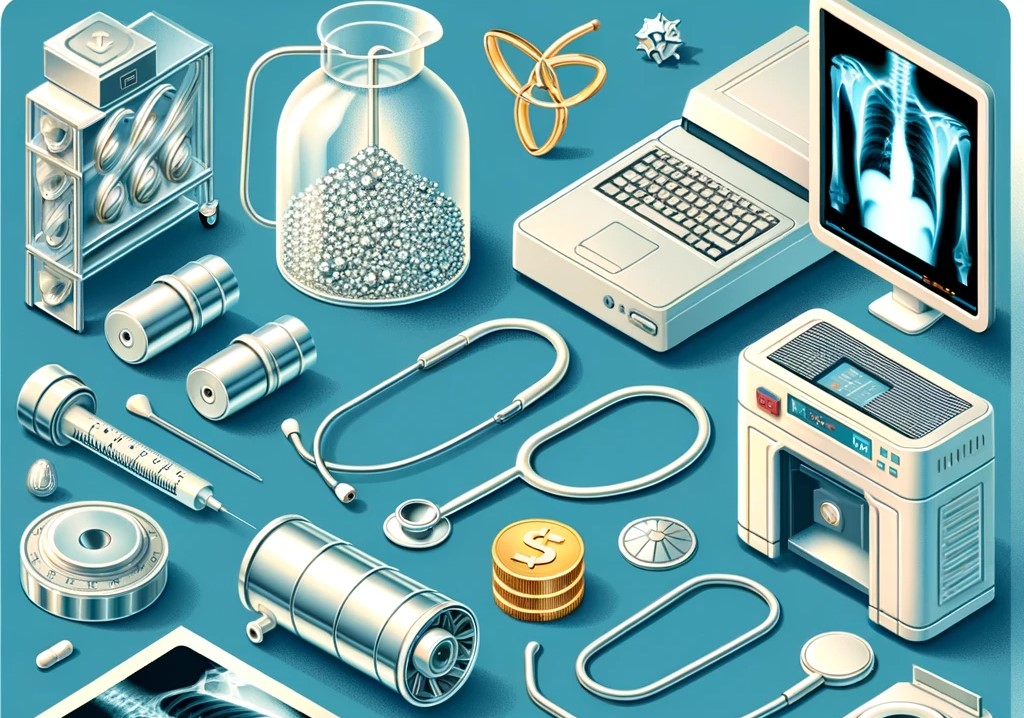
The antimicrobial properties of silver lend themselves crucially to medical applications. Silver’s health benefits are apparent when it’s integrated into wound dressings, catheters, and surgical instruments to curb microbial growth and reduce the risk of infections. The medical field benefits from silver’s ability to inhibit bacterial proliferation, promoting asepsis and aiding in patient care. The use of colloidal silver as an alternative therapy and dietary supplement is a growing trend.
Silver is also incorporated into medical imaging. Traditional X-ray films and photographic plates often contain silver compounds, capturing detailed images crucial for diagnostic purposes. This historical use in photography has left a lasting imprint on medical imaging techniques.
In the realm of technology, silver plays a vital role in various electronic components. From conductive pastes used in solar panels to the production of high-performance batteries, silver’s conductivity ensures efficient energy transfer. It is a key element in the manufacturing of semiconductors, ensuring the seamless functioning of electronic devices that have become integral to our daily lives.
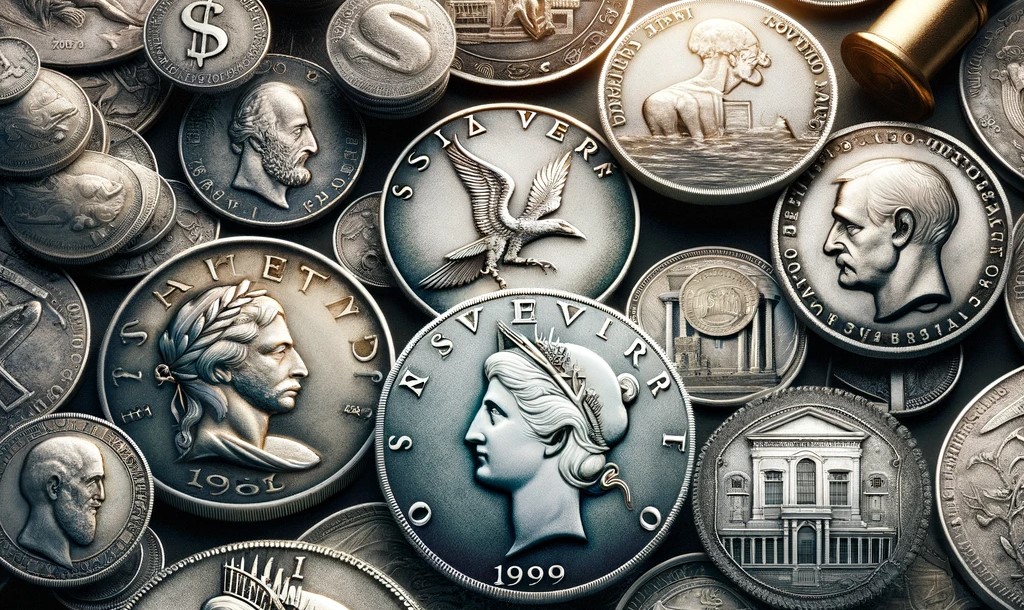
Historically, silver has served as a tangible representation of wealth and currency. Its relative scarcity combines with its enduring properties to explain its historical popularity as a choice for coinage. While no longer a primary material for everyday coins, it has left an enduring legacy. Silver is still utilized in the minting of commemorative, collector and silver investment coins. Notable examples include the American Silver Eagle and the Canadian Silver Maple Leaf, which combine silver’s intrinsic value with its historical significance in currency systems.
Silver’s unique and incredibly diverse qualities set it apart from any other metal. This elemental metal not only has a storied past but continues to shape our present and future. Its rich historical association with wealth and the growing demand for its use in technology have combined to highlight silver’s potential as an investment.
The ability to adapt to diverse applications, from catalytic converters to medical instruments, underscores its enduring relevance in a rapidly evolving world. As a precious metal with limited supply but such varied and escalating demand, it suggests that the silver price could climb rapidly over the coming years.
If you’d like guidance and help to start investing in physical silver, call our expert team on 020 7060 9992.
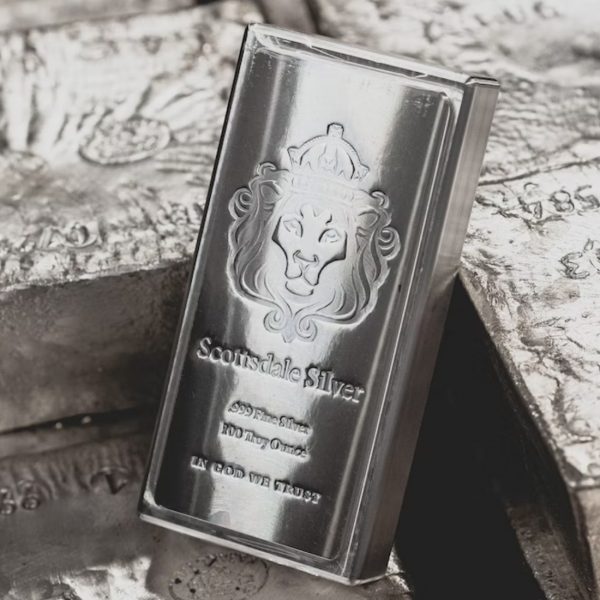
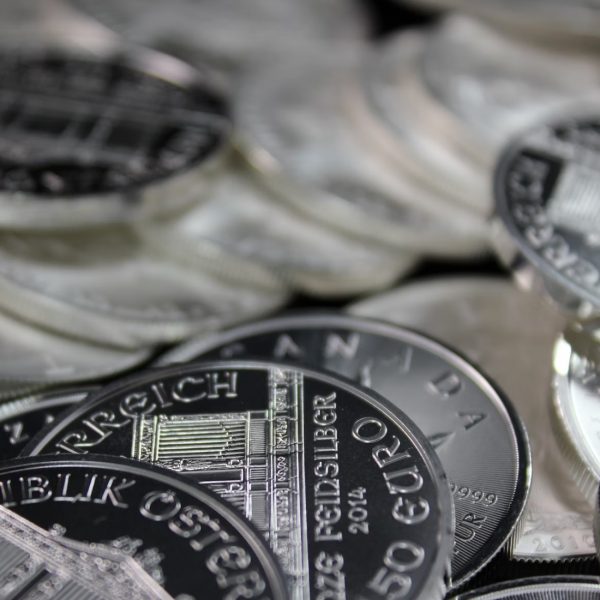
Silver’s distinct shine is attributed to its unique atomic structure, allowing it to efficiently reflect and scatter light. This inherent quality grants silver its iconic lustrous appearance, making it a prized material in various ornamental and functional applications.
Silver’s unrivalled conductivity arises from its abundant free electrons. These movable atoms play a crucial role in facilitating the flow of electricity. With a wealth of free electrons, silver stands as an outstanding conductor, efficiently transmitting electrical currents in various applications.
Silver’s resistance to corrosion stems from its stable atomic structure, preventing easy oxidation. Unlike many metals, silver maintains its lustrous appearance over time. This resistance is attributed to the inherent stability of silver atoms, reducing susceptibility to environmental factors that cause corrosion.
Silver’s application in medicine is driven by its natural antimicrobial properties. The release of bioactive silver ions (Ag(+)) inhibits bacterial and fungal growth, making it a valuable material for wound dressings, surgical instruments, and various medical tools. Its inherent ability to combat infections enhances its role in promoting asepsis in medical settings.
Silver plays a vital role in key industries like electronics, where its high conductivity is harnessed in circuitry. It’s also pivotal in photography, catalytic converters for emissions control, and medical applications due to its antimicrobial properties. This diverse utility showcases silver’s significance in shaping technological, environmental, and healthcare advancements.
Live Gold Spot Price in Sterling. Gold is one of the densest of all metals. It is a good conductor of heat and electricity. It is also soft and the most malleable and ductile of the elements; an ounce (31.1 grams; gold is weighed in troy ounces) can be beaten out to 187 square feet (about 17 square metres) in extremely thin sheets called gold leaf.
Live Silver Spot Price in Sterling. Silver (Ag), chemical element, a white lustrous metal valued for its decorative beauty and electrical conductivity. Silver is located in Group 11 (Ib) and Period 5 of the periodic table, between copper (Period 4) and gold (Period 6), and its physical and chemical properties are intermediate between those two metals.